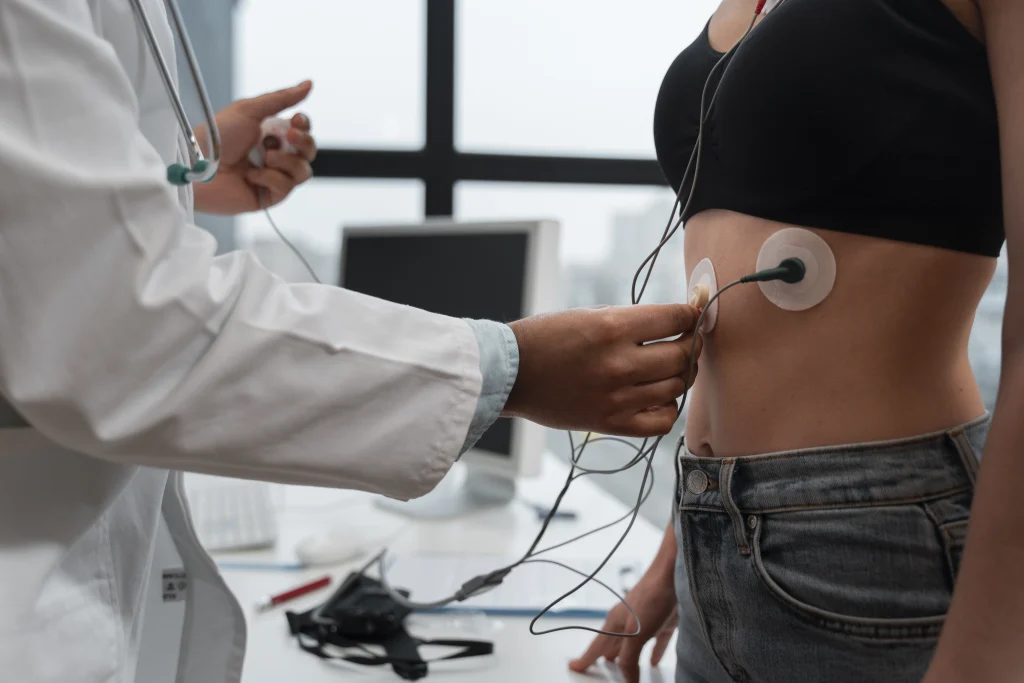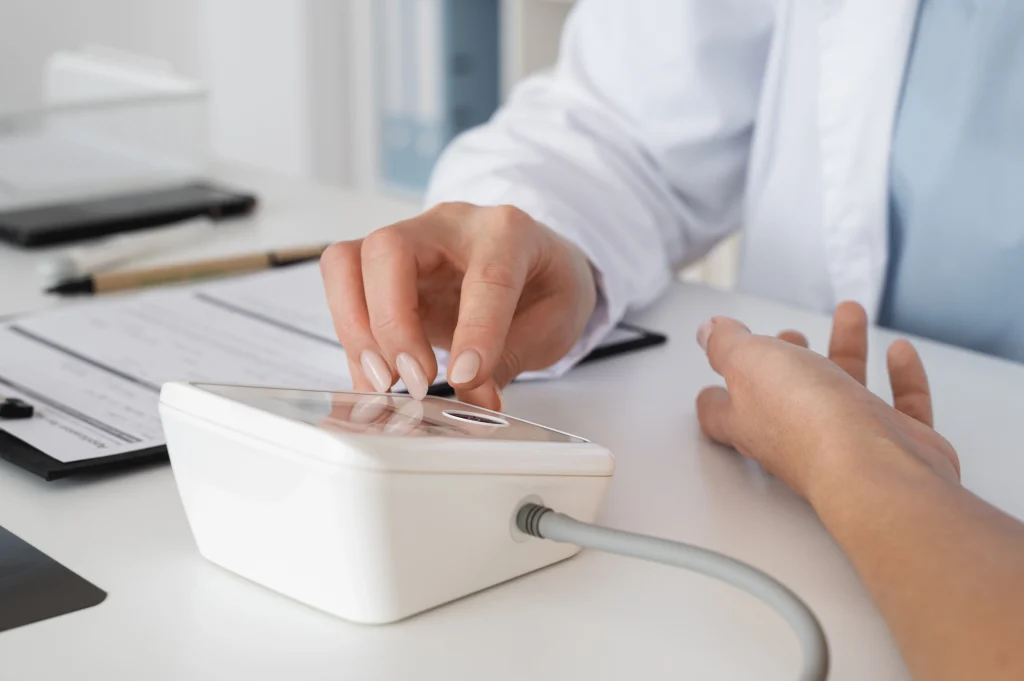Have you ever wondered how accurate billing practices can transform your therapy clinic’s success? Billing for electrical stimulation therapy isn’t just about numbers, it’s about ensuring patients receive the care they need while keeping your practice financially healthy.
Electrical stimulation is a powerful modality in rehabilitation, offering significant benefits for patients. However, its effectiveness depends on proper documentation and billing. Mistakes in this process can lead to delayed payments, claim denials, and even audits.

In this article, we’ll explore how to streamline your billing practices for electrical stimulation therapy. From understanding the right codes to documenting treatments effectively, we’ll guide you toward accurate reimbursement and improved patient outcomes.
Key Takeaways
- Accurate billing ensures timely reimbursement and reduces claim denials.
- Proper documentation supports medical necessity and compliance.
- Understanding the right codes is essential for efficient billing.
- Regular audits can help identify and correct billing errors.
- Training staff on billing practices fosters a culture of accuracy and efficiency.
Understanding the Fundamentals of Electrical Stimulation and CPT Codes
Electrical stimulation therapy is a cornerstone in modern rehabilitation, offering hope and healing to countless patients. This modality is widely used to address muscle weakness, chronic pain, and nerve injuries. By delivering controlled electrical impulses, it helps restore muscle function and reduce discomfort, making it a vital tool in patient recovery.

In rehabilitation, electrical stimulation takes various forms, including neuromuscular electrical stimulation (NMES), transcutaneous electrical nerve stimulation (TENS), and functional electrical stimulation (FES). Each method targets specific conditions, ensuring tailored treatment plans for every patient. Proper documentation of these therapies is essential for both clinical and administrative success.
Overview of Electrical Stimulation in Rehabilitation
Electrical stimulation works by activating nerves and muscles through controlled electrical currents. This process not only aids in muscle re-education but also promotes pain relief and tissue healing. For patients recovering from injuries or surgeries, it can significantly enhance mobility and quality of life.
Conditions such as stroke, spinal cord injuries, and chronic pain syndromes often benefit from this therapy. By integrating electrical stimulation into treatment plans, therapists can accelerate recovery and improve long-term outcomes. However, the effectiveness of this modality depends on accurate documentation and billing practices.
Role of Billing Codes in Accurate Reimbursement
Billing codes play a critical role in ensuring that therapists are reimbursed for their services. For attended electrical stimulation sessions, specific codes like 97032 are used to document the therapist’s presence and involvement. Unattended procedures, on the other hand, require different codes to reflect the level of supervision.
Understanding the differences between Medicare and private payer guidelines is crucial. Medicare often has stricter requirements for documentation and session limits, while private payers may have unique billing rules. Proper coding not only supports financial health but also ensures compliance with regulatory standards.
By mastering these fundamentals, rehabilitation facilities can streamline their billing processes, reduce claim denials, and focus on delivering exceptional patient care. Accurate billing is more than just administrative work—it’s a vital part of the healing journey.
Defining Attended vs. Unattended Electrical Stimulation
Understanding the difference between attended and unattended electrical stimulation is key to effective treatment planning. These two approaches vary in the level of provider involvement, impacting both patient care and billing accuracy. By clearly defining each type, healthcare providers can ensure proper documentation and reimbursement.

Attended Electrical Stimulation Explained
Attended electrical stimulation requires continuous provider supervision throughout the session. This type of treatment involves the therapist actively adjusting stimulation parameters to meet the patient’s needs. It’s often used in complex cases, such as post-surgical recovery or neurological rehabilitation, where precise adjustments are critical.
For example, during a session, the therapist may monitor muscle response and modify the intensity or frequency of the electrical impulses. This hands-on approach ensures the treatment is tailored to the patient’s condition, maximizing its effectiveness. Proper documentation of these adjustments is essential to support medical necessity and billing accuracy.
Unattended Modalities: CPT 97014 and G0283
Unattended electrical stimulation, on the other hand, requires less direct supervision. In these sessions, the patient may use a device independently, with the provider offering initial setup and periodic checks. This type of treatment is often used for pain management or muscle conditioning.
However, billing for unattended procedures can be more complex. Medicare, for instance, does not reimburse for CPT 97014 and instead requires the use of G0283. Private payers may have their own guidelines, making it crucial to stay updated on payer-specific rules. Accurate documentation is vital to avoid claim denials and ensure compliance.
"Proper documentation is the backbone of successful billing. It not only supports the chosen procedure type but also ensures precise treatment records."
By understanding the distinctions between attended and unattended stimulation, providers can optimize both patient care and administrative efficiency. Whether it’s a hands-on session or a self-administered treatment, accurate documentation and billing practices are essential for success.
Billing Challenges and Compliance for the estim cpt code
Navigating the complexities of billing for electrical stimulation therapy can be daunting, but with the right strategies, it becomes manageable. Accurate billing is essential to ensure timely payment and avoid claim denials. By understanding common challenges and implementing best practices, healthcare providers can streamline their processes and focus on patient care.
Documentation Best Practices for Billing
Proper documentation is the foundation of successful billing. It not only supports the medical necessity of the treatment but also ensures compliance with insurance policies. Here are some key practices to follow:
- Clearly document the treatment parameters, including intensity, frequency, and duration.
- Track treatment time in 15-minute increments to align with billing guidelines.
- Include measurable indicators of functional loss to justify the need for therapy.
By adhering to these practices, providers can reduce errors and improve the likelihood of reimbursement.
Common Errors and How to Avoid Them
Mistakes in billing can lead to delayed payments or audits. Here are some common errors and tips to avoid them:
| Error | Solution |
|---|---|
| Misclassification of attended vs. unattended stimulation | Ensure proper coding based on the level of provider involvement. |
| Improper bundling of services | Document each service separately to avoid triggering audits. |
| Incomplete documentation | Include all necessary details to support the billed services. |
"Accurate documentation is not just a requirement—it’s a safeguard for your practice’s financial health."
By addressing these challenges and implementing a solid plan, healthcare providers can enhance their billing practice and ensure compliance. Regular training and internal audits can further reduce errors and improve efficiency.
Detailing the Time-Based Nature of CPT 97032
Effective billing practices are crucial for ensuring seamless reimbursement in healthcare. When it comes to time-based codes like CPT 97032, precision is key. This code measures the exact duration of one-on-one provider-patient contact, ensuring accurate billing and compliance with payer guidelines.
Understanding 15-Minute Increments and the 8-Minute Rule
CPT 97032 is billed in 15-minute increments, reflecting the time spent directly with the patient. To meet billing requirements, therapists must track actual minutes of contact. The 8-minute rule states that at least 8 minutes of a 15-minute increment must be spent on the service to bill for that unit.
For example, if a session lasts 22 minutes, it qualifies for one full unit and a partial unit. This rule ensures that only billable time is recorded, reducing errors and claim denials. Accurate time tracking not only supports reimbursement but also enhances documentation clarity.
Accurately Recording Provider-Patient Contact Time
Precise time recording is essential for justifying reimbursement and maintaining compliance. Here are practical steps therapists can take to ensure accuracy:
- Use a timer to track the exact duration of each session.
- Document the start and end times of provider-patient contact.
- Ensure the treatment parameters, such as intensity and frequency, are clearly recorded.
By following these steps, therapists can streamline their billing processes and focus on delivering quality care.
| Common Time Tracking Errors | Solutions |
|---|---|
| Rounding up time inaccurately | Use a timer to track exact minutes. |
| Failing to document start and end times | Record session times immediately after the session. |
| Overlooking the 8-minute rule | Ensure at least 8 minutes are spent on the service for each unit billed. |
"Accurate time tracking is not just a billing requirement—it’s a reflection of the care provided."
Mastering the time-based nature of CPT 97032 ensures compliance, reduces errors, and supports financial stability. By focusing on precise documentation and understanding billing rules, healthcare providers can enhance their practice’s efficiency and patient outcomes.
Integrating Electrical Stimulation with Other Therapeutic Modalities
Integrating electrical stimulation with other therapeutic modalities can significantly enhance patient recovery outcomes. By combining treatments, we address multifaceted patient needs, ensuring a more comprehensive approach to rehabilitation. This integration not only improves functional outcomes but also supports accurate billing and documentation.
Combining Modalities for Enhanced Patient Outcomes
Electrical stimulation works best when paired with other therapies like therapeutic exercises or manual therapy. For example, combining it with gait training can accelerate recovery for patients with mobility issues. This approach allows providers to tailor treatments to individual needs, maximizing effectiveness.
Accurate coding is essential when documenting combined treatments. It ensures that the complexity of the therapy is reflected in the billing process, reducing the risk of claim denials. Proper documentation also supports medical necessity, which is crucial for payer compliance.
Examples of Complementary Therapies in Rehabilitation
Here are some examples of how electrical stimulation can be integrated with other therapies:
- Therapeutic exercises: Strengthening muscles while using electrical stimulation improves overall function.
- Manual therapy: Combining hands-on techniques with stimulation enhances pain relief and mobility.
- Neuromuscular re-education: This approach helps retrain muscles and nerves, improving coordination and balance.
"Combining therapies not only improves patient outcomes but also ensures that treatments are tailored to individual needs."
By integrating electrical stimulation with other modalities, providers can develop comprehensive treatment plans that meet both clinical and payer requirements. This approach fosters better pain management and rehabilitative function, ultimately enhancing patient care.
Navigating Payer Guidelines and Reimbursement Policies
Navigating the maze of payer guidelines can feel overwhelming, but it’s essential for accurate reimbursement. Medicare and private payers often have different requirements, making it crucial to understand these nuances. By staying informed, we can ensure timely payment and avoid claim denials.
Medicare Versus Private Payer Requirements
Medicare has specific rules for electrical stimulation, especially for unattended sessions. For example, G0283 is the preferred code for unattended type electrical stimulation, replacing other codes like 97014. Private payers, however, may have their own guidelines, requiring careful attention to detail.
Modifiers also play a key role in aligning with payer policies. For instance, the GP modifier is often required for Medicare claims to indicate a therapy service. Proper use of these modifiers ensures that your claim is processed smoothly and reduces the risk of delays.
Documentation Tips for Compliance
Accurate documentation is the backbone of successful billing. Here are some best practices to follow:
- Track time in 15-minute increments to align with billing guidelines.
- Record session details, including start and end times.
- Include measurable indicators of functional loss to justify the need for therapy.
"Meticulous documentation not only supports your claim but also ensures compliance with payer policies."
Avoiding Common Pitfalls
Mistakes in billing can lead to denied claims or audits. Here are some common errors and how to avoid them:
| Error | Solution |
|---|---|
| Misusing codes for attended vs. unattended sessions | Use G0283 for unattended sessions with Medicare. |
| Incomplete documentation | Include all necessary details to support the billed services. |
| Ignoring payer-specific guidelines | Stay updated on the latest policies from each payer. |
By understanding these guidelines and implementing best practices, we can navigate the complexities of payer policies with confidence. This ensures timely reimbursement and allows us to focus on delivering exceptional patient care.
Optimizing Documentation and Clinical Application
Accurate documentation is the cornerstone of effective physical therapy practice. It ensures that treatments are justified, reimbursements are timely, and compliance with policy requirements is maintained. By establishing clear records of medical necessity, we can enhance both patient care and administrative efficiency.
Establishing Medical Necessity in Clinical Records
Medical necessity is the foundation of every physical therapy treatment. It justifies why a specific intervention, such as electrical stimulation, is required for a patient’s condition. To demonstrate this, we must document:
- The patient’s diagnosis and functional limitations.
- The treatment plan and expected outcomes.
- Measurable progress over time.
This level of detail not only supports the treatment but also aligns with payer policy and reduces the risk of audit.
Best Practices for Recording Patient Conditions and Responses
Effective documentation goes beyond basic notes. It includes:
- Detailed descriptions of the patient’s condition at each session.
- Specific treatment parameters, such as intensity and duration.
- Objective measures of progress, like range of motion or pain levels.
By following these practices, we create a robust record that supports both clinical decisions and billing accuracy.
"Clear and comprehensive documentation is not just a requirement—it’s a reflection of the care we provide."
Aligning Clinical Records with Reimbursement Policies
Payer policy often dictates what must be included in clinical records. For example, Medicare requires detailed documentation to justify the use of electrical stimulation. Private payers may have additional requirements, such as specific modifiers or session limits.
To ensure compliance, we recommend:
- Regularly reviewing payer guidelines and updates.
- Training staff on documentation best practices.
- Conducting internal audits to identify and correct errors.
Creating a Robust Record-Keeping System
A well-organized record-keeping system is essential for efficiency and compliance. It should include:
- Standardized templates for consistency.
- Secure storage to protect patient information.
- Easy access for staff and auditors when needed.
By implementing these strategies, we can streamline our documentation processes and focus on delivering exceptional care.
Conclusion
Accurate billing and documentation are the backbone of successful rehabilitation programs. By using the appropriate code and maintaining detailed records, we ensure timely reimbursement and compliance with payer guidelines. This not only supports financial stability but also enhances patient care.
Best practices, such as time-based documentation and adherence to payer requirements, are essential. Proper coding boosts both clinical function and administrative efficiency, ensuring that every session is accurately recorded and billed.
Integrating electrical stimulation into rehabilitation programs requires precise documentation. This approach not only improves muscle stimulation outcomes but also aligns with payer policies. By adopting comprehensive billing strategies, we empower holistic care and financial health.
We remain committed to supporting healthcare providers with innovative solutions and expert guidance. Together, we can navigate the complexities of billing and focus on delivering exceptional patient care.
FAQ
What is the difference between attended and unattended electrical stimulation?
Attended electrical stimulation, billed under CPT 97032, requires direct provider supervision during the session. Unattended modalities, such as CPT 97014 and G0283, do not require constant provider presence but still need proper documentation and setup.
How do I ensure accurate billing for time-based electrical stimulation?
For CPT 97032, bill in 15-minute increments and follow the 8-minute rule. Record the exact provider-patient contact time and ensure your documentation supports the duration of the session.
What are the common billing errors for electrical stimulation therapy?
Common errors include incorrect coding, insufficient documentation, and failure to establish medical necessity. Double-check payer guidelines and ensure your records detail the patient’s condition, treatment plan, and session specifics.
Can electrical stimulation be combined with other therapies?
Yes, electrical stimulation can be integrated with modalities like manual therapy or therapeutic exercises to enhance patient outcomes. Ensure each therapy is documented separately and aligns with the patient’s treatment plan.
How do Medicare and private payer guidelines differ for electrical stimulation?
Medicare often has stricter documentation and medical necessity requirements compared to private payers. Always verify payer-specific policies to avoid claim denials and ensure compliance.
What documentation is required to establish medical necessity?
Include the patient’s diagnosis, treatment goals, session details, and progress notes. Clearly explain how electrical stimulation addresses the patient’s condition and supports their rehabilitation plan.
What is the 8-minute rule for billing electrical stimulation?
The 8-minute rule states that at least 8 minutes of a 15-minute increment must be spent on direct patient care to bill for that unit. Ensure your documentation reflects the exact time spent on the therapy.
How can I avoid audits when billing for electrical stimulation?
Maintain thorough and accurate records, follow payer guidelines, and ensure your coding aligns with the services provided. Regularly review your documentation for compliance and clarity.





